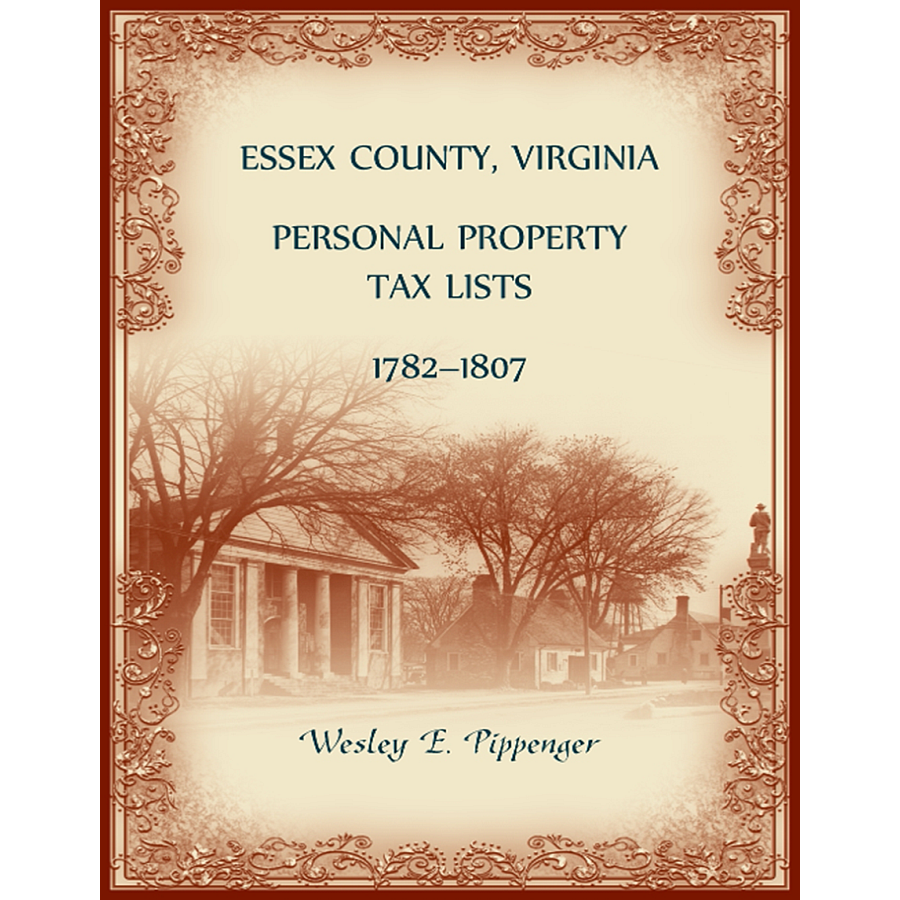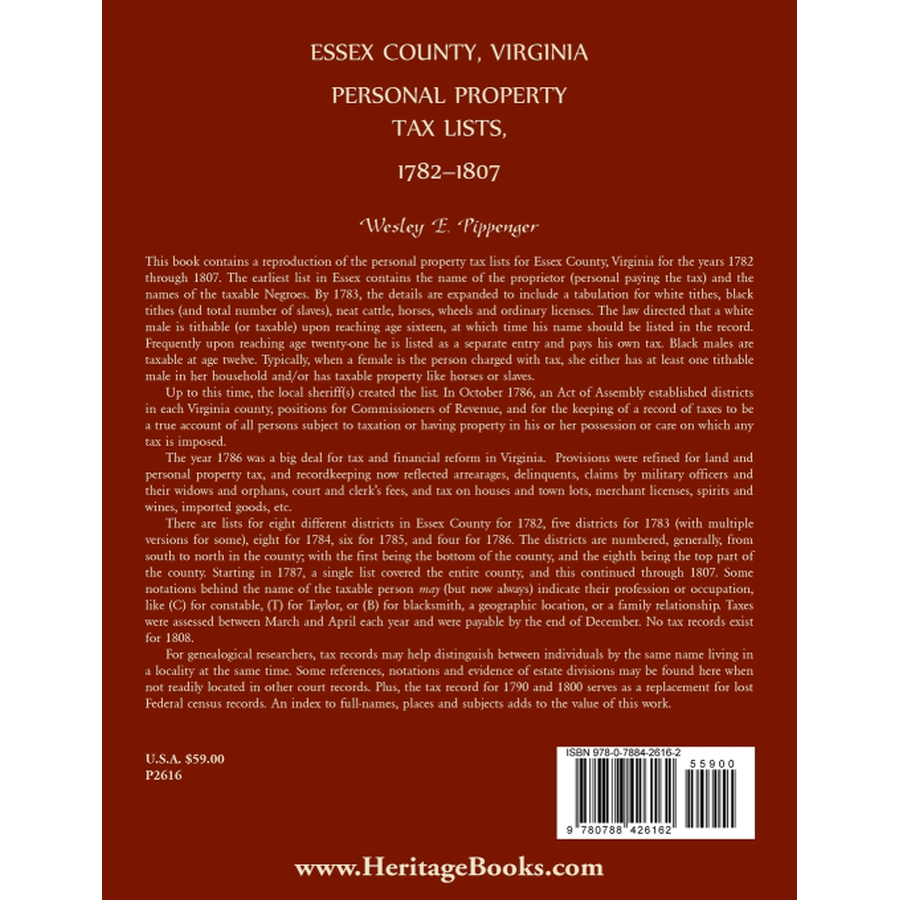Essex County, Virginia Personal Property Tax Lists, 1782-1807
Couldn't load pickup availability
This book contains a reproduction of the personal property tax lists for Essex County, Virginia for the years 1782 through 1807. The earliest list in Essex contains the name of the proprietor (personal paying the tax) and the names of the taxable Negroes. By 1783, the details are expanded to include a tabulation for white tithes, black tithes (and total number of slaves), neat cattle, horses, wheels and ordinary licenses. The law directed that a white male is tithable (or taxable) upon reaching age sixteen, at which time his name should be listed in the record. Frequently upon reaching age twenty-one he is listed as a separate entry and pays his own tax. Black males are taxable at age twelve. Typically, when a female is the person charged with tax, she either has at least one tithable male in her household and/or has taxable property like horses or slaves.
Up to this time, the local sheriff(s) created the list. In October 1786, an Act of Assembly established districts in each Virginia county, positions for Commissioners of Revenue, and for the keeping of a record of taxes to be a true account of all persons subject to taxation or having property in his or her possession or care on which any tax is imposed.
The year 1786 was a big deal for tax and financial reform in Virginia. Provisions were refined for land and personal property tax, and recordkeeping now reflected arrearages, delinquents, claims by military officers and their widows and orphans, court and clerk's fees, and tax on houses and town lots, merchant licenses, spirits and wines, imported goods, etc.
There are lists for eight different districts in Essex County for 1782, five districts for 1783 (with multiple versions for some), eight for 1784, six for 1785, and four for 1786. The districts are numbered, generally, from south to north in the county; with the first being the bottom of the county, and the eighth being the top part of the county. Starting in 1787, a single list covered the entire county, and this continued through 1807. Some notations behind the name of the taxable person may (but now always) indicate their profession or occupation, like (C) for constable, (T) for Taylor, or (B) for blacksmith, a geographic location, or a family relationship. Taxes were assessed between March and April each year and were payable by the end of December. No tax records exist for 1808.
For genealogical researchers, tax records may help distinguish between individuals by the same name living in a locality at the same time. Some references, notations and evidence of estate divisions may be found here when not readily located in other court records. Plus, the tax record for 1790 and 1800 serves as a replacement for lost Federal census records. An index to full-names, places and subjects adds to the value of this work.
Wesley E. Pippenger
2022, 8.5" x 11", paper, index, 480 pp.
ISBN: 9780788426162
101-P2616

